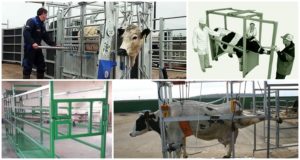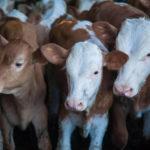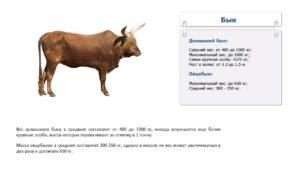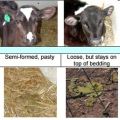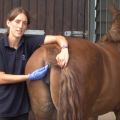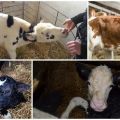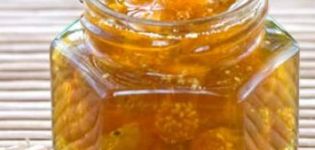What to do if a calf has a fever and home treatment
The newborn calf is a helpless creature with low immune defenses, prone to disease if not properly cared for. Therefore, the farmer must be careful and monitor his health. Sometimes it happens that the calf has a fever; what needs to be done in such situations is to immediately determine the cause of the violation and begin to eliminate it. If the owner is inexperienced, it is advisable to invite a veterinarian to diagnose and prescribe therapy.
Possible causes of deviations from the norm in cattle
In order to notice in time the deviation of temperature indicators from the norm, you need to know which indicators are considered normal (in aboutFROM):
- up to 1.5 months - 38.5-40.5;
- up to 2 months - 38.5-40.2;
- up to 12 months - 38.5-40.
According to other sources, the listed indicators may vary by 0.2-0.5 aboutC and do not testify to pathologies if the calf is doing well.
Fever suggests that the animal's body is fighting against pathogenic bacteria or other microorganisms, and the symptom sometimes accompanies non-inflammatory processes. The reasons why a calf's temperature may be high or low are as follows:
- paratyphoid fever - with a disease, the temperature rises to 41 aboutC, the calf loses its appetite, it begins diarrhea with blood clots, in some cases constipation occurs, the ears and limbs get cold. If the lungs are affected, coughing and shortness of breath occur;
- bronchopneumonia - in addition to an acute increase in temperature to 42 aboutC, the disease is accompanied by respiratory failure, profuse discharge from the eyes and nasal passages, cough;
- colibacillosis is an intestinal disease in which digestive function is impaired. The calf refuses food, becomes lethargic, apathetic, quickly loses weight, dehydration develops against a background of light yellow diarrhea. The temperature first rises sharply, then it is diagnosed to decrease to 32-34 aboutFROM.
If the calf is poisoned, weak, it has no appetite, the temperature tends to gradually decrease.
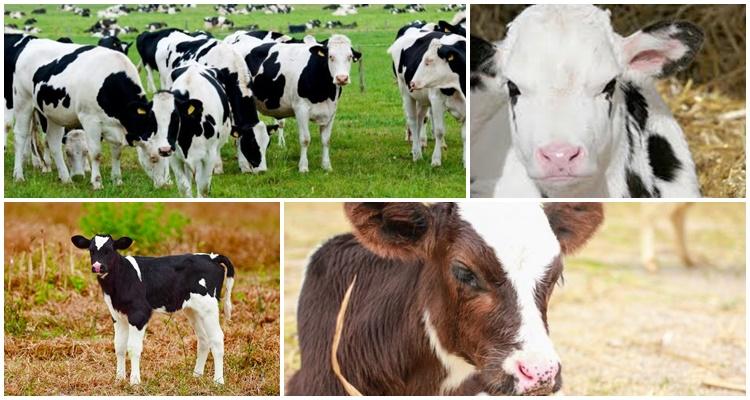
Both with a decrease in temperature and in the case of severe hyperthermia, the animal needs immediate veterinarian assistance in order to avoid serious consequences and even death (for example, with paratyphoid fever without treatment).
How to measure temperature at home
It is much easier to understand that a person's temperature is elevated - just touch your forehead with your hand to feel the heat.
In cows and calves, the skin is constantly cool, therefore, one can guess about the deterioration of the animal's well-being and hyperthermia only by concomitant signs - lethargy, apathy, poor appetite, and so on.
The easiest way is to use a thermometer - mercury or electronic. Mercury shows more accurately, but you need to keep it longer, up to 8-10 minutes, and handle it more carefully. The thermometer should be disinfected and shaken off to the minimum mark. Lubricate the tip with vaseline oil so that the calf does not hurt while the thermometer is inserted into the anus. A string must be tied to the device.
The calf should be fixed so that it does not twitch and does not try to run away - put its head against the wall. Then the tail is lifted to the animal, a thermometer is inserted into the rectum so that about 2.5-3 centimeters remain outside, and wait 8-10 minutes. For an electronic thermometer, 1-2 minutes are enough, it will sound a signal that the data has been recorded.
What should be done at high or low temperatures?
How to treat the fever depends on the cause of the calf's hyperthermia. Most often, antibacterial drugs are prescribed, they are used for diseases of the bronchopulmonary system and intestinal infections. It is advisable to choose a drug focused on the pathogen of the pathology from a number of broad-spectrum antibiotics:
- "Sulfazole";
- "Tetracycline";
- "Gentamicin";
- Enroxil;
- "Levomycetin";
- Flumequin;
- "Amoxicillin";
- Ceftriaxone.
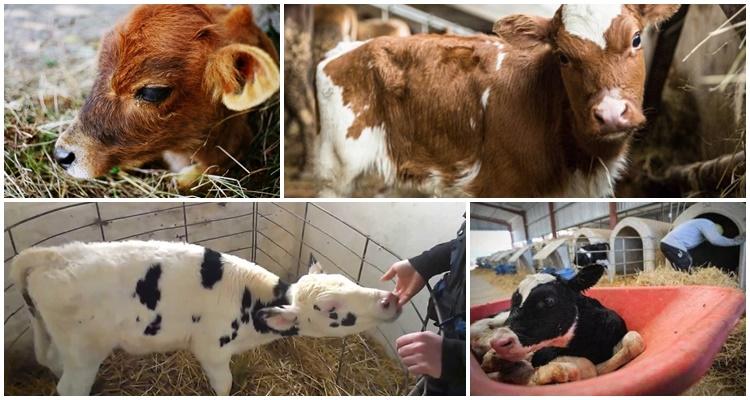
To bring down the temperature, a course of antibiotic therapy is often enough, but the treatment also consists of a general strengthening, detoxification treatment. With colibacillosis, immunoglobulins, antitoxic sera are used. Salmonellosis and other intestinal infections are treated with bacteriophages.
Any inflammation that occurs with a violation of the temperature regime requires replenishment of the water-salt balance in the animal's body. The calf should be fed with warm boiled water. If he has diarrhea, it is recommended to halve the amount of milk drawn. In serious condition, the animal is injected intravenously with solutions of "Trisol", Ringer-Locke, glucose, sodium chloride. This allows you to eliminate dehydration, increase the body's resistance to infection and normalize the temperature.
Preventive measures
To avoid temperature disturbances, you should:
- timely vaccinate calves;
- comply with sanitary and hygienic standards in the stall;
- observe the hygiene of childbirth and drinking milk;
- regularly carry out disinfecting measures in the barn.
To prevent calves from contracting infectious diseases in utero, it is recommended to carry out routine vaccination of cows 4 weeks before mating. A normal calf temperature is not always an indicator of good health. It is necessary to pay attention to the animal's appetite, its appearance, weight gain, and physical activity. In case of a sharp deterioration in well-being, accompanied by hyperthermia, you should immediately call a veterinarian, because calves are vulnerable to infections and can die in the absence of timely assistance.
